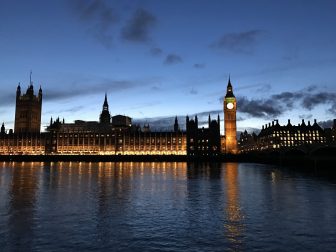 The Building Safety Bill has become law after receiving Royal Assent yesterday.
The Building Safety Bill has become law after receiving Royal Assent yesterday.
The 262-page act is intended to “create lasting generational change” to the way residential buildings are constructed and maintained in the UK following the 2017 Grenfell Tower disaster, while protecting the rights of leaseholders.
The Bill’s comprehensive reform to building safety legislation will include the appointment of a Building Safety Regulator who will ensure those living in high rise buildings are being kept safe.
Also among the sweeping reforms is the introduction of three ‘gateways’ during the planning, design and construction stages of higher-risk buildings to ensure rigorous, safety-focused oversight throughout a building’s lifecycle.
The Bill also covers remediation of certain breaches and limits the ability to pass on cost to leaseholders. In addition, it introduces the concept of Building Liability Orders and implements changes to the Landlord and Tenant Act 1985 (s20 and new s20D provisions). It also introduces new home warranties, the New Homes Ombudsman Scheme and details remedies for defective construction products.
Andrew Bulmer, CEO of The Property Institute, commented: “The new Act is a clear call for those in the sector – including property managers, developers and landlords – to work together to identify, mitigate and manage risks to residents. We are pleased that policymakers have listened to key suggestions from ARMA, IRPM and other industry bodies to improve how the new regime will work in practice. We will continue to work collaboratively to ensure the new Act can become the tough safety net which the industry has been striving for following the Grenfell tragedy.
“However, despite the progress made there is still a mountain to climb, and we are several years away from remediating all unsafe buildings. We are waiting to see whether developers who have signed the Government’s pledge will remain true to their word and pay to fix these buildings, whether they do so to the right standard, and we also need a solution from Government for those buildings with no existing developer.
“The daily strain on leaseholders, resident directors and property managers in affected buildings is extremely concerning. During the transition phase therefore, we will continue our efforts to ensure that the regulations and implementation of the Act is proportionate and practical, to avoid unnecessary delays.”


Comments are closed.